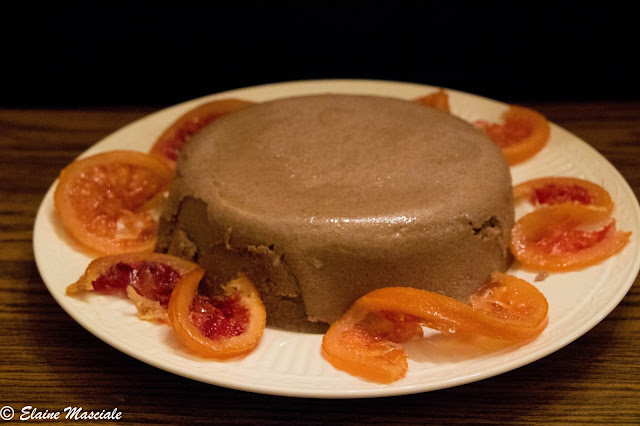Black Walnut Catsup
One more look at black walnuts in the 19th-century. My previous posts focused on the amazing coloring properties of the husk. Today it is time to look at the black walnut as food.
I was very intrigued and a bit puzzled at the number of references to black walnut catsup/ketchup in cookbooks of the time. Today tomato catsup is the sole survivor of a variety of catsups: tomato, grape, lemon, mushroom, cucumber, oyster, tomato, and black walnut, to name a few. It is a shock to modern sensibility to realize that "ketchup" or "catsup" (both spellings were used) simply meant a vinegar based sauce. The American Heritage Dictionary gives a good definition:
Most of the recipes I found for Black Walnut Catsup stipulated that the walnut must be gathered while still tender enough that a pin could be run through the nut, husk and all. Black walnuts grow inside a large, highly tannic green husk. A substantial amount of husk encases the nutshell - it is more than just a slight wrapping. Based on these recipes, a pin would have to pass through the outer husk, through the nutshell, the nut itself, and back out. It seemed a daunting idea; black walnut shells are very hard. The trick is in the timing - the nutshell forms inside the husk. If you can harvest the nuts before the shell forms, you have the proper state. By accident, I discovered that this timing in my area (northern Illinois) is late June to early July. A neighbor has a black walnut tree, and early one summer there was a particularly large crop growing Storms and squirrels knocked a number of them to the ground and I harvested them over several weeks. To my surprise and delight, I was able to easily run a pin through the green nut. As the season advanced into mid-July, I could feel the nutshell inside the husk and then was unable to pierce the nut.
As suggested by several recipes, I brined my nuts in a solution of salt and water. From there the nuts went to sit in vinegar for a week or more. Finally I cooked the liquid with spices. I combined several recipes to make mine, and was pleasantly surprised at the result. The black walnut catsup smelled very much like Worcestershire sauce.
"Procure the walnuts by the last of June - keep them in salt and water for a week, then bruise them, and turn boiling vinegar on them. Let them remain covered with vinegar several days, stirring them up each day - then boil a quarter of an hour with a little more vinegar, strain it through a thick cloth, so that none of the coarse particles of the walnuts will go through - season the vinegar highly with cloves, allspice, pepper and salt. Boil the whole a few minutes, then bottle and cork it tight. Keep it in a cool space."
Here is another version from The Virginia Housewife (1838)
I was very intrigued and a bit puzzled at the number of references to black walnut catsup/ketchup in cookbooks of the time. Today tomato catsup is the sole survivor of a variety of catsups: tomato, grape, lemon, mushroom, cucumber, oyster, tomato, and black walnut, to name a few. It is a shock to modern sensibility to realize that "ketchup" or "catsup" (both spellings were used) simply meant a vinegar based sauce. The American Heritage Dictionary gives a good definition:
Word History: The word ketchup exemplifies the types of modifications that can take place in borrowing
 both of words and substances. The source of our word ketchup may be the Malay word k both of words and substances. The source of our word ketchup may be the Malay word k chap, possibly taken into Malay from the Cantonese dialect of Chinese. K chap, possibly taken into Malay from the Cantonese dialect of Chinese. K chap, like ketchup, was a sauce, but one without tomatoes; rather, it contained fish brine, herbs, and spices. Sailors seem to have brought the sauce to Europe, where it was made with locally available ingredients such as the juice of mushrooms or walnuts. At some unknown point, when the juice of tomatoes was first used, ketchup as we know it was born. But it is important to realize that in the 18th and 19th centuries ketchup was a generic term for sauces whose only common ingredient was vinegar. The word is first recorded in English in 1690 in the form catchup, in 1711 in the form ketchup, and in 1730 in the form catsup. All three spelling variants of this foreign borrowing remain current. chap, like ketchup, was a sauce, but one without tomatoes; rather, it contained fish brine, herbs, and spices. Sailors seem to have brought the sauce to Europe, where it was made with locally available ingredients such as the juice of mushrooms or walnuts. At some unknown point, when the juice of tomatoes was first used, ketchup as we know it was born. But it is important to realize that in the 18th and 19th centuries ketchup was a generic term for sauces whose only common ingredient was vinegar. The word is first recorded in English in 1690 in the form catchup, in 1711 in the form ketchup, and in 1730 in the form catsup. All three spelling variants of this foreign borrowing remain current. |
The American Heritage® Dictionary of the English Language, Fourth Edition copyright ©2000 by Houghton Mifflin Company. Updated in 2009. Published by Houghton Mifflin Company. All rights reserved.



Comments
Post a Comment